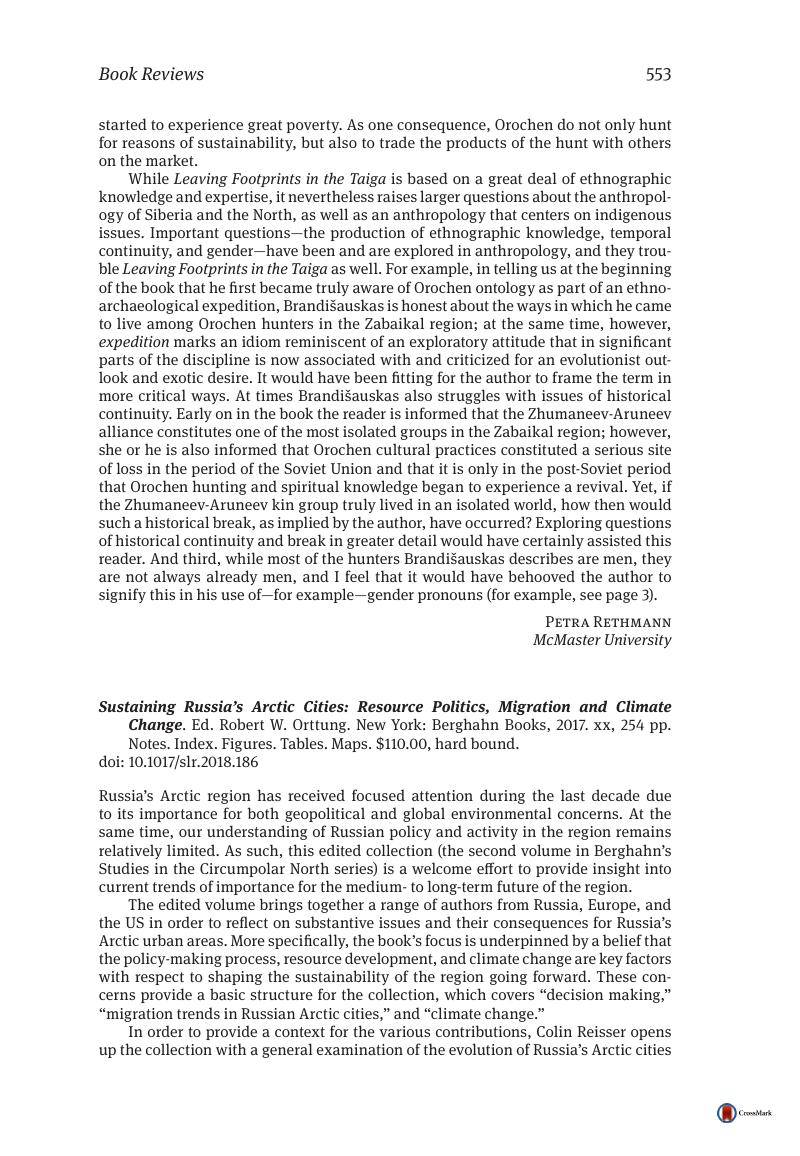No CrossRef data available.
Article contents
Sustaining Russia's Arctic Cities: Resource Politics, Migration and Climate Change. Ed. Robert W. Orttung. New York: Berghahn Books, 2017. xx, 254 pp. Notes. Index. Figures. Tables. Maps. $110.00, hard bound.
Review products
Sustaining Russia's Arctic Cities: Resource Politics, Migration and Climate Change. Ed. Robert W. Orttung. New York: Berghahn Books, 2017. xx, 254 pp. Notes. Index. Figures. Tables. Maps. $110.00, hard bound.
Published online by Cambridge University Press: 10 July 2018
Abstract
An abstract is not available for this content so a preview has been provided. Please use the Get access link above for information on how to access this content.

- Type
- Book Reviews
- Information
- Copyright
- Copyright © Association for Slavic, East European, and Eurasian Studies 2018


